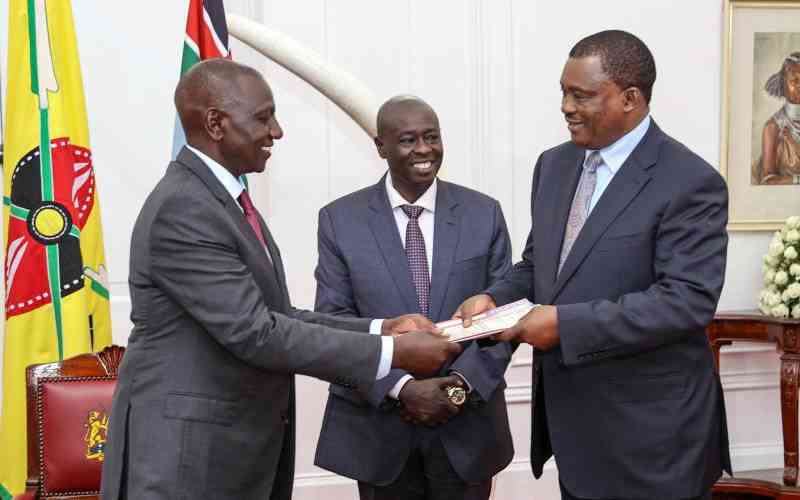By Walter Mutwiri, Deloitte Eastern Africa
The Minister for Finance presented the 2009/2010 budget in the face of unprecedented consequences with the global economic downturn, the effects of the post-election violence and the prevalent drought. In his speech, the Minister said that this fiscal year’s budget was drafted with the aim of stimulating growth in priority areas that will in turn create growth in the key sectors of the economy.
The Minister introduced measures aimed at cushioning the ordinary Kenyan from the high cost of living and boosting the country’s infrastructure. This is a welcome step under the current economic environment and in preparing the stage for economic growth.
However, it is disappointing to note that he gave little attention to the existing business enterprises from a corporate tax perspective.
The Minister concentrated on capital incentives for new business establishments, largely within the infrastructure sector and to private/public sector partnerships.
Some of the capital incentives given to investments in the infrastructure sector include the machinery used in projects initiated under a ‘concessionairing’ arrangement.
However, it is important to note that deductions available should be spread and claimed over a period of the concession. This means it will take longer to recoup investment costs as concession arrangements are normally long-term in nature. It may therefore not be as attractive as it appears.
job creation
There are only a few other incentives outside of infrastructure. For example, a 150 per cent capital deduction shall be available to investments set up outside the capital cities of Nairobi, Mombasa and Kisumu.
 |
There was not enough to write home about in this year’s budget proposals in the country’s mainstay sectors of agriculture and tourism. |
This is aimed at opening up the rural areas, creating more jobs at that level and at the same time decongesting the urban areas.
We have seen very little capital incentives for businesses in the agricultural, tourism and ICT sectors which are the key drivers of the economy.
There was certainly nothing to write home about in this year’s budget proposals in the country’s mainstay sectors of agriculture and tourism. However, the ICT sector, and in particular telecommunications operators, received a boost as they shall be entitled to a wear and allowance of 20 per cent of the expenditure incurred on telecommunication equipment.
Staying with ICT, the Minister introduced a paltry five per cent allowance with respect to acquisition of software to be used in a business. It is discouraging to note that due consideration was not given to the nature of software. By its nature, software - and by extension ICT - is dynamic and constantly changing.
Stay informed. Subscribe to our newsletter
Obsolete technology
The decision to exempt mobile phones from VAT will also be popular with telecoms companies.
This means technology becomes obsolete within a short period of time. It is therefore not realistic to assume that software will have a useful life of 20 years.
A rate of at least 30 per cent would have been more reasonable. All of this is just a nod in the right direction though; we expected much more in the commercial sector as it contributes substantially to the government coffers.
A higher rate of capital allowance would have gone a long way to encourage more investments in this sector.
To add insult to injury, investments qualifying for investment deductions have been limited to those with an outlay of at least Sh200 million.
This will act as a disincentive to businesses putting up investments valued at less than this amount. This is discouraging news for small and medium businesses as they cannot get a full deduction in the first year of using the investment.
The writers are employees of Deloitte Eastern Africa: [email protected]. The views expressed here are their own, and not necessarily those of Deloitte.
 The Standard Group Plc is a
multi-media organization with investments in media platforms spanning newspaper
print operations, television, radio broadcasting, digital and online services. The
Standard Group is recognized as a leading multi-media house in Kenya with a key
influence in matters of national and international interest.
The Standard Group Plc is a
multi-media organization with investments in media platforms spanning newspaper
print operations, television, radio broadcasting, digital and online services. The
Standard Group is recognized as a leading multi-media house in Kenya with a key
influence in matters of national and international interest.
 The Standard Group Plc is a
multi-media organization with investments in media platforms spanning newspaper
print operations, television, radio broadcasting, digital and online services. The
Standard Group is recognized as a leading multi-media house in Kenya with a key
influence in matters of national and international interest.
The Standard Group Plc is a
multi-media organization with investments in media platforms spanning newspaper
print operations, television, radio broadcasting, digital and online services. The
Standard Group is recognized as a leading multi-media house in Kenya with a key
influence in matters of national and international interest.









